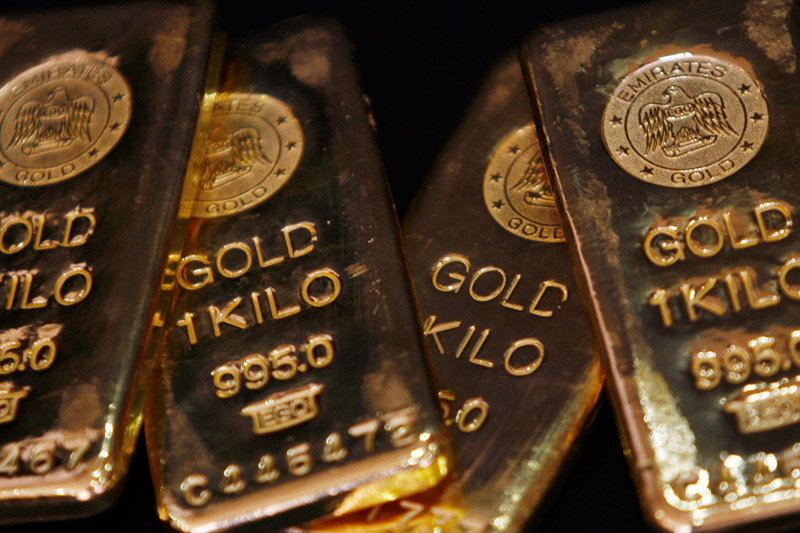Investing.com - Gold bounced back from the prior session's two-week low on Friday, boosted by a weaker U.S. dollar, as markets continued to digest the Federal Reserve's decision to raise interest rates for the first time in nearly a decade.
Gold for February delivery on the Comex division of the New York Mercantile Exchange rallied $15.40, or 1.47%, on Friday to close the week at $1,065.00 a troy ounce. On Thursday, prices plunged to $1,046.80, the lowest since December 3, before ending at $1,049.60, down $27.20, or 2.53%.
The dollar index, which measures the greenback’s strength against a trade-weighted basket of six major currencies, ended Friday's session down 0.47% at 98.73. It rose to 99.33 on Thursday, the most since December 3.
In a unanimous decision, the Fed raised interest rates to a range of 0.25% to 0.50% from a range of 0% to 0.25%, as widely expected, following the conclusion of its policy meeting on Wednesday.
Speaking at a press conference following the announcement, Fed Chair Janet Yellen vowed that the FOMC will not be mechanical in its approach to normalize monetary policy and that future rate hikes would be gradual and data dependent.
In its latest median projections, the FOMC anticipates that the Fed Funds Rate will reach 1.375% by the end of 2016, implying four quarter-point hikes next year. The Fed funds futures currently suggests there will be just two rate hikes in 2016, one in June and one in December.
For the week, prices of the precious metal dipped $10.70, or 0.99%, the eighth weekly decline over the past nine weeks.
Gold futures are on track to post an annual decline of 11% in 2015, the third yearly loss in a row, as speculation over the timing of a Fed rate hike dominated market sentiment for most of the year. Rising interest rates historically have been bad news for gold, which can't compete with the higher interest rates offered by other assets.
Also on the Comex, silver futures for March delivery surged 39.3 cents, or 2.87%, on Friday to settle at $14.09 a troy ounce as the dollar softened. Silver prices sank to $13.62 on December 14, a level not seen since August 2009.
On the week, silver futures rose 19.6 cents, or 1.53%. Silver is on track to post an annual decline of 8% in 2015.
Elsewhere in metals trading, copper for March delivery soared 6.9 cents, or 3.38%, on Friday to settle the week at $2.112 a pound, as a weaker dollar and speculation that Chinese producers will scale back production boosted prices.
A day earlier, prices dropped to $2.034, the lowest since December 3. Despite Friday's strong gains, Comex copper prices dipped 0.4 cents, or 0.24%.
Copper is on track to post an annual decline of 27% in 2015 as fears of a China-led global economic slowdown spooked traders and rattled sentiment.
The Asian nation is the world’s largest copper consumer, accounting for nearly 45% of world consumption.
In the week ahead, trading volumes are expected to remain light due to the Christmas holiday and as many traders already closed books before the end of the year, reducing liquidity in the market and increasing the volatility.
The U.S. is to release key reports on gross domestic product, durable goods orders, home sales and jobless claims.
Ahead of the coming week, Investing.com has compiled a list of these and other significant events likely to affect the markets. The guide skips Monday as there is no relevant data on this day.
Tuesday, December 22
The U.S. is to release final data on third quarter economic growth, as well as a report on existing home sales.
Wednesday, December 23
The U.S. is release a string of reports, including data on durable goods orders, personal spending, new homes sales, consumer sentiment and crude oil inventories.
Thursday, December 24
Markets in Germany will remain closed in observance of Christmas Eve.
The U.S. is to produce weekly data on initial jobless claims.
Friday, December 25
Markets in Australia, New Zealand, Europe, the U.K., Switzerland, Canada and the U.S. will remain closed for the Christmas Day holiday.
